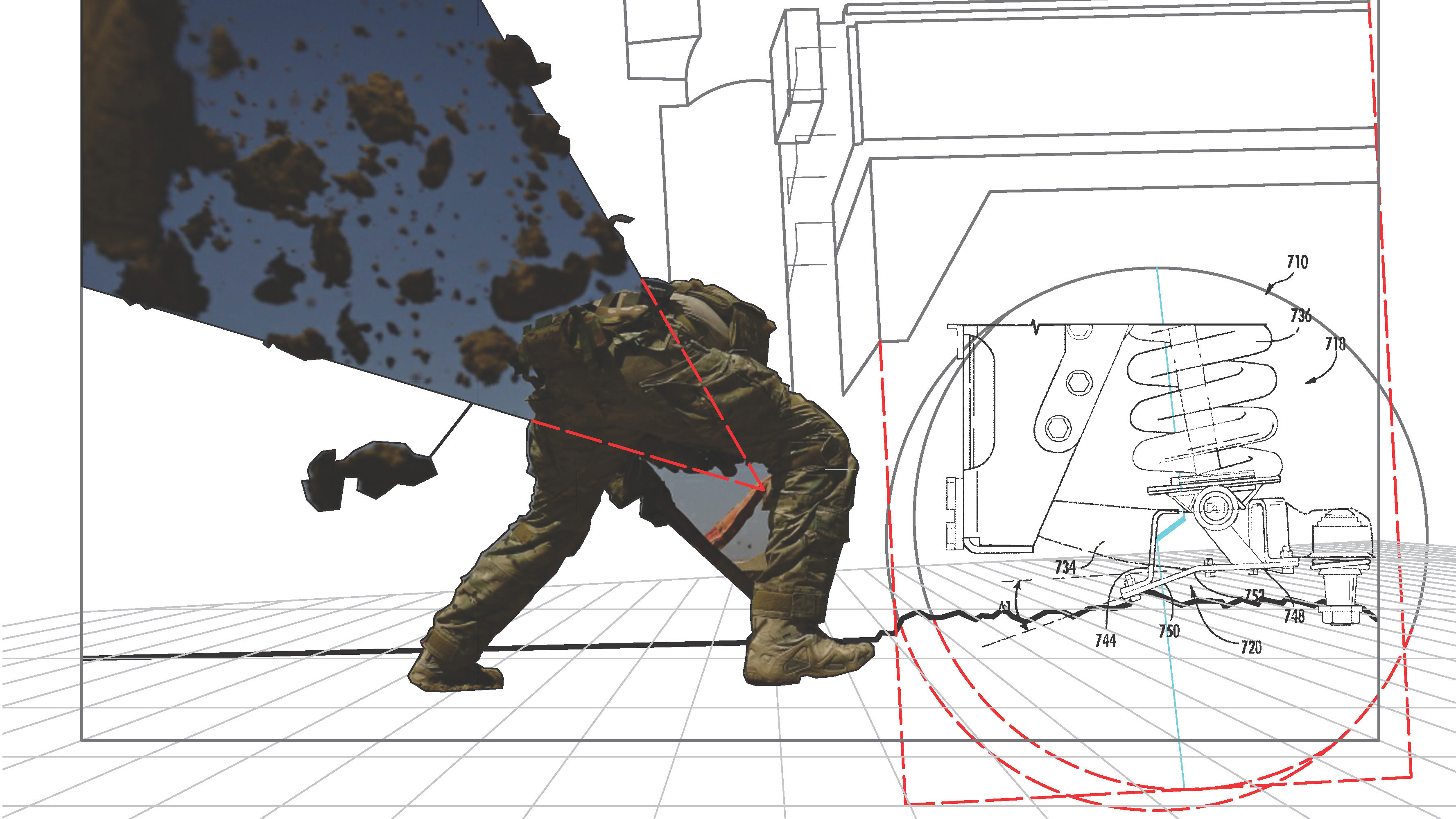
We respect your privacy. We use non-sensitive information such as cookies and device identifiers to insure that we give you the best experience on our website. You can agree to allow cookies or opt out.


Matt and I were asking questions about how military technology abstracts the landscape and excludes everyone else, drawing on my PhD thesis, The Politics of Survivability: How Military Technology Scripts Urban Relations, and Matt’s ongoing visual exploration of militarised landscapes and sites of political/social contestation. We wrote a concept note for a multimedia collaboration in Remote Sensing. Read the short paper here (coming soon).
Cite:
Shayya, Fadi and Matthew Flintham. 2023. “Engineering the Landscape: Tracing Militarized Accounts of the Landscapes in Utility Patents.” Remote Sensing. [submitted visual essay on to symposium at the University of Arts London]

Breakdown while wheels bog in muddy ground in Kandahar Airfield, Afghanistan, image (Young Jr., 2014); visual tracing depths and incorporating ‘Axle Assembly’ for US military vehicle (US Patent Application No. 2011/0169240 A1, 2012); illustration by Fadi Shayya, 2022.
“The transformation of militarized notions of urban and rural landscapes through warfare across the geographies of Iraq, Afghanistan, Syria and most recently Ukraine, is accelerated by technical advancements in armoured vehicles and weapons systems. However, it is in the context of training and testing sites in the UK and the USA that we will begin studying the technology of warfare – and by extension, modern technical thought (Simondon 2017) – so that we might establish visual research methods to critique and negotiate technology’s exclusionary territorialization of geography as a battlespace.
…
This collaboration will consider these technologies of survivability, and it will do so remotely via the study of publicly available utility patents, which are amongst the few accessible documents to describe such technologies in detail. Indeed, to scrutinize military utility patents is an attempt to escape the binaries and grand narratives that often fail to critically evaluate the established power structures and conditions that precipitate conflict. Instead, we will focus on the technical assemblages which link soldiers, landscapes and innumerable policy decisions, all channeled through the vortex of training and conflict deployment.”